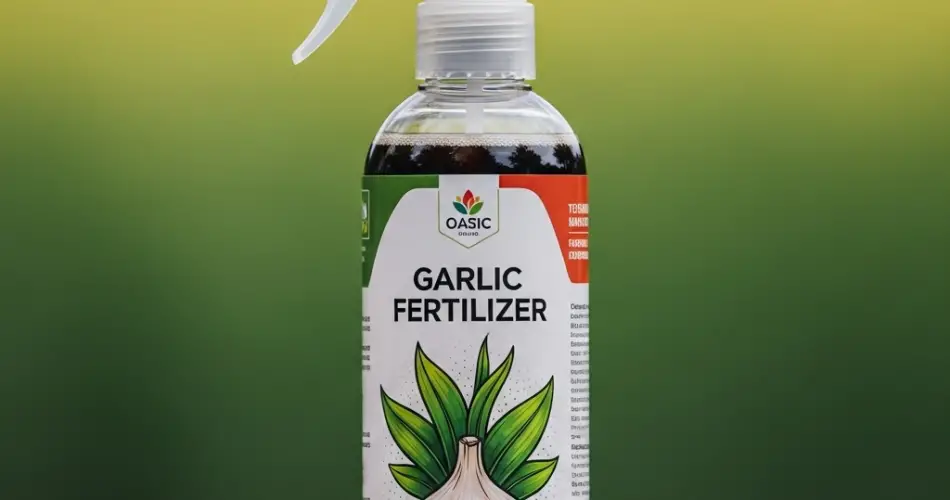Garlic has long been celebrated for its culinary and medicinal value, but this pungent bulb also holds impressive power in the garden. When used as a natural fertilizer, garlic can boost plant health, deter pests, and enrich soil with essential nutrients. Easy to make and completely organic, garlic fertilizer is a sustainable and budget-friendly way to nourish your plants while minimizing synthetic chemical use.
Whether you grow vegetables, herbs, or ornamental plants, incorporating garlic into your gardening routine can result in stronger, healthier plants and a more resilient garden.
Why Garlic Makes a Great Fertilizer
Garlic contains compounds like allicin, sulfur, and selenium that give it its strong odor and powerful properties. These compounds provide several benefits for plant care:
-
Antifungal: Helps prevent common plant diseases like powdery mildew and root rot
-
Antibacterial: Reduces the presence of harmful microbes in the soil
-
Pest-repellent: Deters aphids, whiteflies, spider mites, and even some fungal gnats
-
Soil booster: Adds trace minerals and stimulates beneficial microbial activity
In addition to its protective traits, garlic works as a mild fertilizer that improves plant vitality over time when applied regularly.
How to Make Garlic Fertilizer at Home
Creating garlic fertilizer at home is simple and requires only a few common ingredients. There are different methods depending on whether you want to use it as a foliar spray, soil drench, or compost booster.
Basic Garlic Fertilizer Recipe (Soil Drench or Spray)
Ingredients:
-
2–3 large garlic cloves
-
1 liter of water
-
1 teaspoon of mild liquid soap (optional, for spray use)
-
Optional: a pinch of cayenne or chili powder (for enhanced pest repelling)
Instructions:
-
Peel and crush the garlic cloves.
-
Add them to 1 liter of water in a pot or jar.
-
Let the mixture steep for 8–12 hours, or overnight.
-
Strain the liquid to remove garlic solids.
-
(Optional) Add a few drops of mild soap to help the spray stick to leaves.
-
Store in a spray bottle or watering can and use within 5–7 days.
How to Use Garlic Fertilizer
There are several ways to apply garlic fertilizer, depending on your garden’s needs.
1. Soil Drench
Pour the garlic solution directly at the base of plants to allow the roots to absorb nutrients and benefit from the garlic’s natural antifungal and antibacterial properties. This also helps enrich the soil over time and creates a healthier root environment.
Ideal for: Tomatoes, cucumbers, squash, leafy greens, herbs.
Frequency: Every 10–14 days.
2. Foliar Spray
Spray the garlic solution on plant leaves (both tops and undersides) to deter pests and protect against fungal infections. Use early in the morning or late in the afternoon to avoid leaf burn from the sun.
Ideal for: Roses, beans, peppers, eggplants.
Frequency: Once a week or after rain.
Caution: Always test on a small section of the plant first, especially with tender leaves, to ensure there’s no adverse reaction.
3. Compost Booster
Toss crushed garlic into your compost pile to enhance its microbial activity and reduce odor. Garlic’s antifungal properties help balance the decomposition process and keep your compost healthy.
Note: Use in moderation, as too much garlic could slow down beneficial microbial processes.
Companion Planting with Garlic
Garlic is also a powerful ally when planted in the soil. It naturally deters pests and improves the overall health of neighboring plants.
Good companions:
-
Tomatoes
-
Peppers
-
Roses
-
Carrots
-
Fruit trees
Avoid planting garlic near beans and peas, as it may inhibit their growth.
Benefits of Garlic Fertilizer Over Chemical Products
-
Natural and organic – Safe for use on edible plants
-
Budget-friendly – Made from kitchen scraps or bulk garlic
-
Eco-conscious – No harmful runoff or soil damage
-
Pollinator-safe – Doesn’t harm bees or butterflies
Unlike synthetic fertilizers that may offer fast but short-lived results, garlic-based fertilizers work gradually, enhancing both soil health and plant immunity over time.
Additional Tips for Best Results
-
Use fresh garlic for maximum potency—avoid powdered garlic, which may be less effective.
-
Do not store garlic solution in metal containers, as it may react with the metal.
-
Avoid applying garlic spray during flowering to prevent disrupting pollinators.
-
Combine with other natural fertilizers like compost tea or banana peel water for a well-rounded nutrition plan.
Conclusion
Garlic fertilizer is a versatile, natural solution for healthier plants and more productive gardens. Whether used as a foliar spray to keep pests away or as a soil tonic to improve root health, this homemade remedy is a simple way to elevate your gardening game. With regular use, garlic can help you build a thriving garden that’s resilient, chemical-free, and rich in life.
So go ahead—spice up your soil with garlic and watch your plants respond with vibrant growth and vitality.



